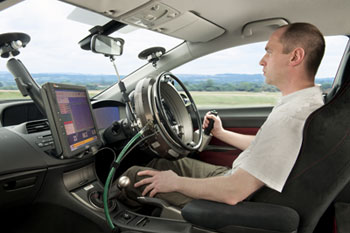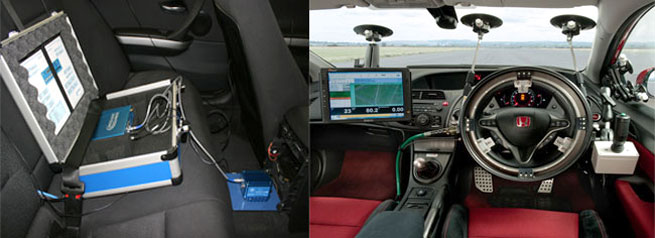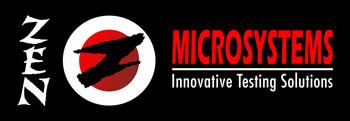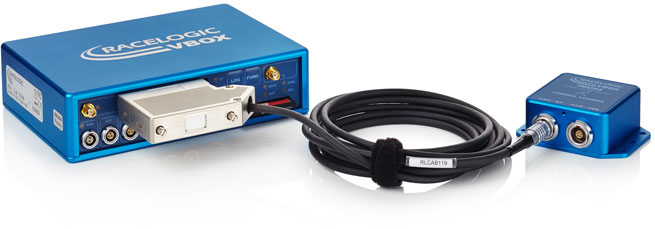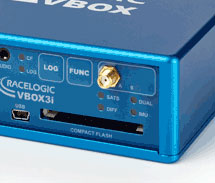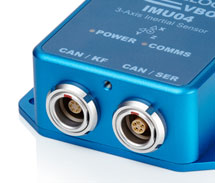TEST PROCEDURES
The NHTSA (USA National Highway Traffic Safety Association) ruling requires the inclusion of ESC on all new passenger vehicles and trucks with a gross vehicle weight rating of 4,536 Kg or less. The FMVSS126 test procedure evaluates the performance of Electronic Stability Control (ESC) systems with the goal of reducing vehicle rollover accidents.
The FMVSS126 procedure simulates a driver steering past a sudden obstacle and then trying to get back on course. For most drivers a car without ESC will roll or spin. The test measures the responsiveness of the steering system and the ability for the vehicle to correct and return to the original course.
To pass, the vehicle must deviate at least 1.83 metres from the original centreline path within 1.07 seconds of the first steering input being applied, to show that it is responsive to steering input. The yaw rate ratios of the vehicle are also measured and compared at set time intervals, to prove that the ESC can control the heavy yaw manoeuvre and does not let the vehicle spin.
Slowly Increasing Steer
The simulation test procedure begins with a “Slowly Increasing Steer Test” intended to determine the steering wheel angle A associated with a lateral acceleration of 0.3g for a speed of 80 km/h with the steering angle increasing at a rate of 13.5 deg/s. When performed via physical testing, three tests are repeated for counter-clockwise steering up to a lateral acceleration of 0.5 g; the steering angle at exactly 0.3 g’s of lateral acceleration is calculated using linear regression for each test, and the three results are averaged. The sequence is repeated for clockwise steering, and the absolute angles obtained in the two directions are averaged to obtain A.
Sine with Dwell
A “sine with dwell” test involves bringing the vehicle to a speed slightly above 80 km/h with no steering or braking, letting it coast in the highest gear to 80 km/h, and then using a robot to apply a steering control with the shape of a wave.
Two series of tests are conducted. In the first test, the waveform is scaled by 1.5*A. If the vehicle passes the test, then the amplitude is increased for the next test by an increment of 0.5*A. The final run in a series is reached when the amplitude is greater than 270 deg. (Also, if the amplitude delta is greater than 300°, then the amplitude for the final run is reduced to 300 deg).

The success or failure of each test in the series is based on the vehicle state at three specific times relative to the start of the steering:
If the gain is 5.0 or greater, then a lateral displacement check is made at 1.07 sec. The lateral displacement of the vehicle mass centre must be 1.83 m (6 ft) or greater relative to the start of the test for vehicles with GVW of 3,500 kg or less. If the displacement is less, then the vehicle fails the test. For vehicles with GVW greater than 3,500 kg, the required lateral displacement is 1.52 m (5 ft).
A peak yaw rate is obtained for the test. The instant yaw rate 1.0 sec after the steering stops is compared to the peak rate, and must be 35% of the peak rate or less. If the instant yaw rate is higher than 35% of the peak yaw rate, then the vehicle fails the test.
The instant yaw rate 1.75 sec after the steering stops is compared to the peak rate, and must be 20% of the peak rate or less. If the instant yaw rate is higher than 20% of the peak yaw rate, then the vehicle fails the test.

